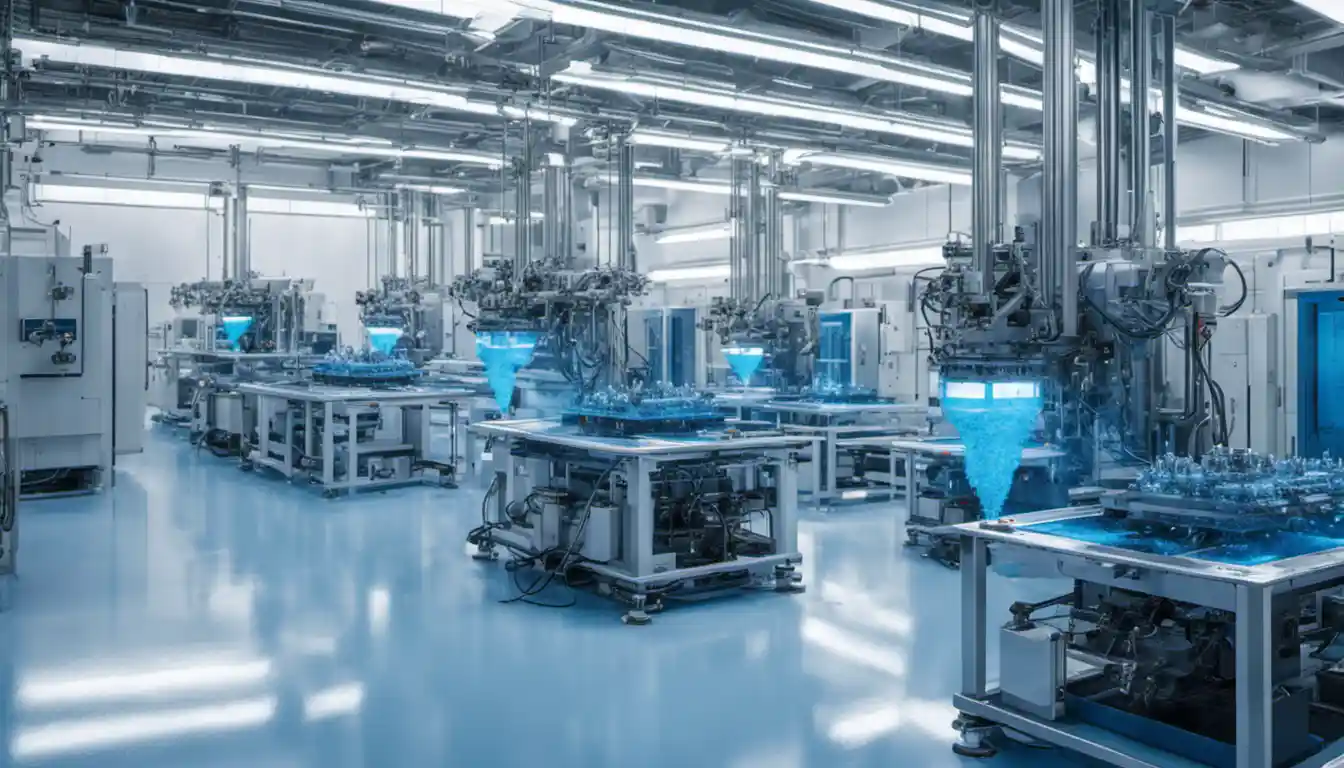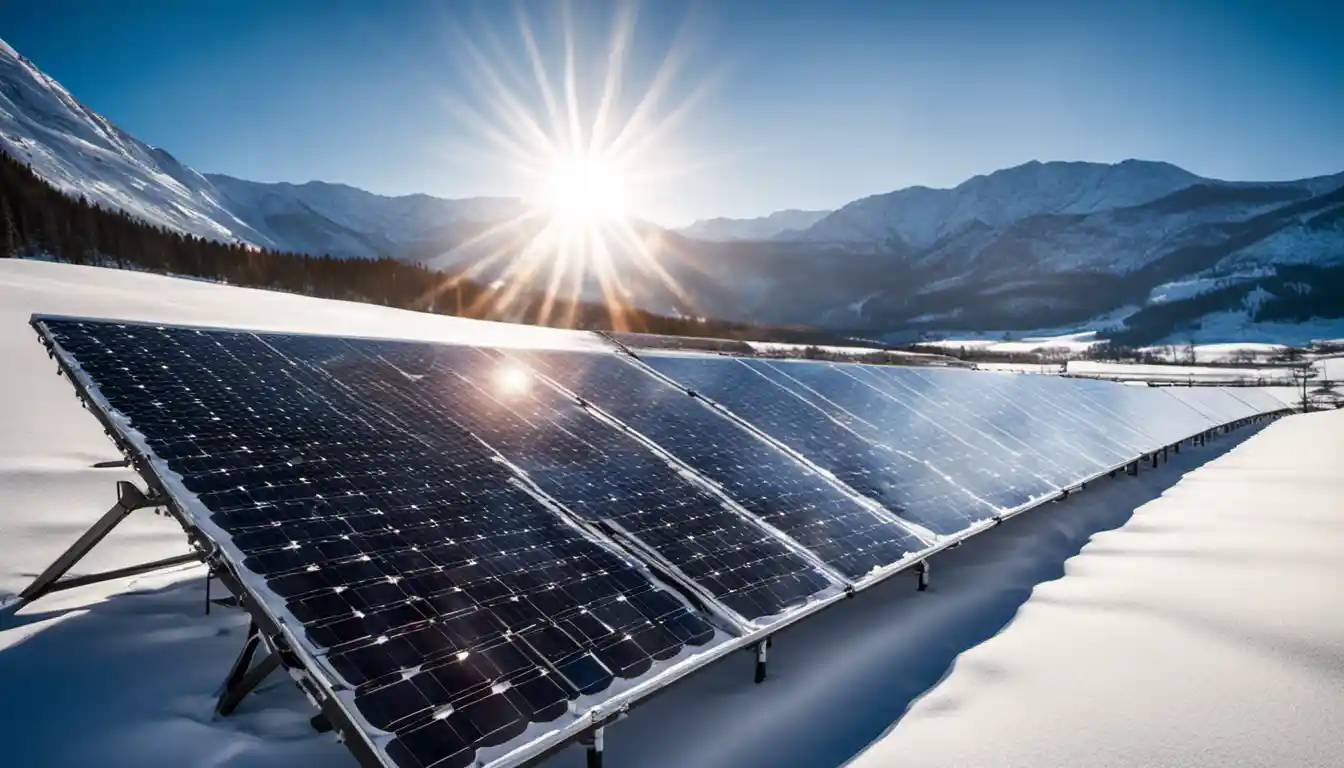Understanding Monocrystalline Solar Panels
Monocrystalline solar panels are considered the most efficient type of solar panel in the market. They have an efficiency rating ranging between 15-20%, with premium models reaching above 22%, due to their pure silicon structure.
Defining Monocrystalline Solar Panels
Monocrystalline solar panels are developed from a single, pure crystal structure, hence the term “mono”. The panel is made by cutting a single crystal into thin wafers. This single structure allows for free and unobstructed flow of electricity, maximizing the efficiency of monocrystalline solar panels.
Manufacturing Process of Monocrystalline Solar Panels
The manufacturing process of monocrystalline solar panels is distinctive, contributing to their high efficiency. The process starts with “growing” a single-crystal silicon ingot in a carefully controlled environment. A seed crystal is dipped into molten silicon and withdrawn slowly, while it’s rotating at the same time. This process forms a cylindrical-shaped ingot which is then finely sliced into circular wafers. The wafer edges get trimmed to provide the characteristic square shape of monocrystalline cells.
Appearance of Monocrystalline Solar Panels
Monocrystalline solar panels exhibit a uniform black hue due to their single-crystal structure which reflects less light than other types. They’re often recognized by the square cells, giving them their sleek appearance.
Monocrystalline vs. Polycrystalline Solar Panels: A Comparative Study
The two most popular residential solar panel types are monocrystalline and polycrystalline, and understanding the differences between these two can help you make informed decisions.
Overview of Polycrystalline Solar Panels
Polycrystalline solar panels, unlike their monocrystalline counterparts, are made from multiple silicon fragments melted together. They exhibit a blue, speckled look and have a lower efficiency range between 15-17%.
Differences in Manufacturing Process

While monocrystalline panels are crafted from a single crystal structure, polycrystalline solar panels originate from raw silicon melted and poured into a mold before cutting into square cells. This more straightforward process makes them less expensive, but also less efficient.
Comparing Aesthetics: Monocrystalline vs. Polycrystalline Solar Panels
While monocrystalline panels exhibit a uniform, sleek black design, polycrystalline panels show a blue, mosaic-like appearance due to the multi-crystal nature of their silicon cells.
Efficiency Comparison: Monocrystalline vs. Polycrystalline Solar Panels
The efficiency of monocrystalline solar panels is superior to polycrystalline panels. With higher silicon purity and fewer obstructions to electron flow, monocrystalline panels deliver higher efficiency, all other factors being equal.
Comparing Life Span and Recyclability
Both monocrystalline and polycrystalline solar panels typically last for 25 years or more. However, monocrystalline panels might retain their high efficiency for a more extended period. Plus, the more straightforward structure of monocrystalline silicon solar cells makes them relatively easier to recycle.
Understanding the Efficiency of Monocrystalline Solar Panels
Let’s delve into understanding the stellar efficiency of monocrystalline solar panels, which is central to why they’re considered the best in the market.
The Science Behind Monocrystalline Silicon Solar Cell Efficiency
The hallmark of the high monocrystalline silicon solar cells efficiency lies in their pure silicon content. The single silicon crystal permits electrons—activated by sunlight—to move freely across the cell, producing electric current with minimal energy loss.
Factors Affecting the Efficiency of Monocrystalline Solar Panels
The efficiency of monocrystalline solar panels is affected by various parameters such as installation angle, temperature, and shading. Ensuring optimal installation, cooling mechanisms, and keeping the panels free from shading can maximize efficiency.
How Monocrystalline Solar Panels Perform in Different Climates

Monocrystalline panels perform well across a spectrum of climates. However, they tend to outperform in cooler conditions since high temperatures could decrease solar cell efficiency.
Improving the Efficiency of Monocrystalline Solar Panels
To maintain the optimum efficiency of monocrystalline solar panels, regular cleaning, installation at the correct angle, and ensuring enough ventilation for cooling are essential tasks.
Monocrystalline Solar Panels: Cost Analysis
Understanding the Cost of Monocrystalline Solar Panels
Monocrystalline solar panels come with a higher upfront cost due to their high efficiency and the intricate manufacturing process. However, over the lifespan of the panel, the cost per kWh of power generated often proves to be lower.
Comparing Costs: Monocrystalline vs. Polycrystalline Solar Panels
Though Polycrystalline solar panels are cheaper, the superior efficiency and longer life expectancy of monocrystalline panels contribute to their better cost-effectiveness in the long run.
Conclusions: Maximizing Efficiency with Monocrystalline Solar Panels
Importance of Solar Panel Efficiency

Efficiency determines the amount of sunlight converted into usable electricity. A high-efficiency solar panel generates more power, reducing the number of panels needed, which is particularly beneficial for space-constrained installations.
Reasons to Choose Monocrystalline Solar Panels
Given their superior efficiency, long lifespan, and aesthetic appeal, monocrystalline solar panels are a worthwhile investment for achieving sustainable energy goals.
Future Trends of Solar Energy and Efficiency
Technological advancements indicate a future where monocrystalline panels will gain further efficiency, joining the ranks of premium options like thin-film and concentrating solar cells.
Frequently Asked Questions About Monocrystalline Solar Panels
How to Maintain the Efficiency of Monocrystalline Solar Panels?
Periodic checkups, ensuring adequate ventilation, proper installation angle, and regular cleaning keeps a solar panel efficient. For a comprehensive list of maintenance practices, check out our guide on maximizing solar panel efficiency.
What is the Most Efficient Type of Solar Panel?
Currently, the most efficient commercially available type of solar panel is monocrystalline.
Which Solar Panel Type is More Suitable for Hot Climates? Monocrystalline or Polycrystalline?
Although both types see slightly decreased efficiency with heat, monocrystalline panels typically handle high temperatures better due to their superior heat tolerance.
With this guide, you’re now equipped with insights to harness the potential of monocrystalline solar panels and venture toward an eco-friendly lifestyle!




1 thought on “Efficiency of Monocrystalline Solar Panels: A Comprehensive Guide to Maximizing Solar Power”
Comments are closed.